 by our College Data Analytics Team
by our College Data Analytics TeamULS total enrollment is approximately 390 students.
See racial/ethnic breakdown for all students.
Male/Female Breakdown of Graduate Students
About 54% of full-time grad students are women, and 46% men.
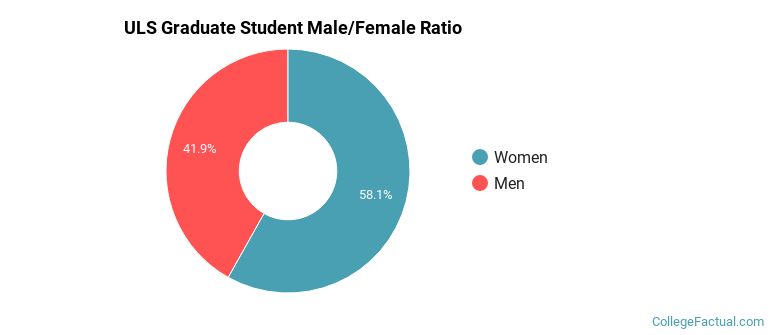
For the gender breakdown for all students, go here.
ULS Racial-Ethnic Breakdown of Graduate Students
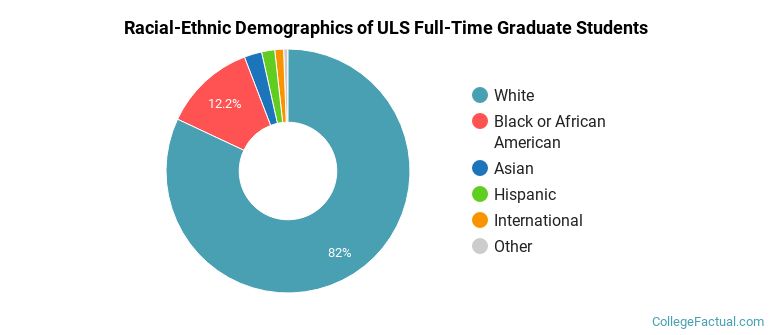
| Race/Ethnicity | Number |
|---|---|
| White | 107 |
| Black or African American | 14 |
| Hispanic | 5 |
| Asian | 2 |
| Native Hawaiian or Pacific Islander | 0 |
| International | 0 |
| Multi-Ethnic | 0 |
| Unknown | 0 |
See racial/ethnic breakdown for all students.
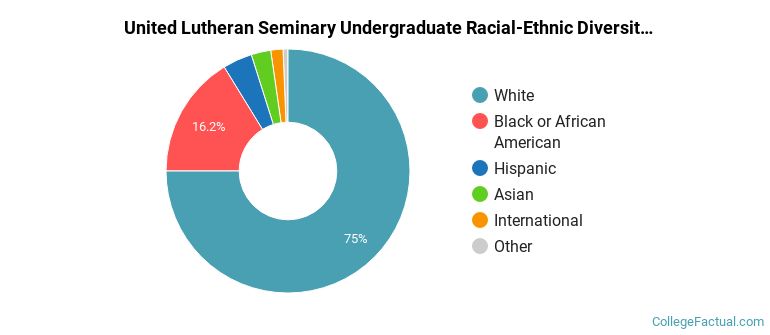
| Race/Ethnicity | Number |
|---|---|
| White | 276 |
| Black or African American | 84 |
| Hispanic | 11 |
| Asian | 10 |
| International | 6 |
| Unknown | 3 |
| Native Hawaiian or Pacific Islander | 0 |
| Multi-Ethnic | 0 |
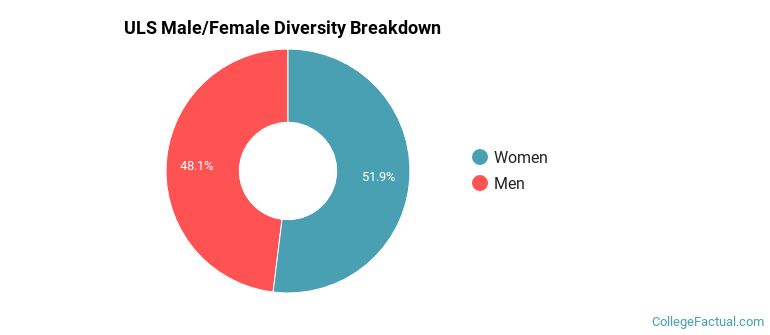
There are approximately 206 female students and 184 male students at ULS.
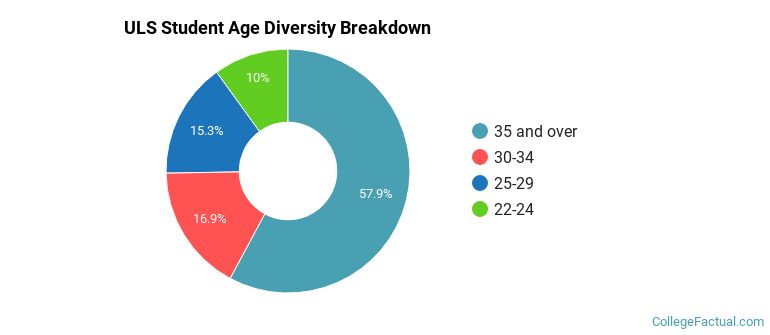
| Student Age Group | Amount |
|---|---|
| 35 and over | 151 |
| 30-34 | 44 |
| 25-29 | 40 |
| 22-24 | 26 |
| 18-19 | 0 |
| 20-21 | 0 |
| Under 18 | 0 |
Footnotes
*The racial-ethnic minorities count is calculated by taking the total number of students and subtracting white students, international students, and students whose race/ethnicity was unknown. This number is then divided by the total number of students at the school to obtain the racial-ethnic minorities percentage.
References
Department of Homeland Security Citizenship and Immigration Services
Read College Factual's Diversity Ranking Methodology.